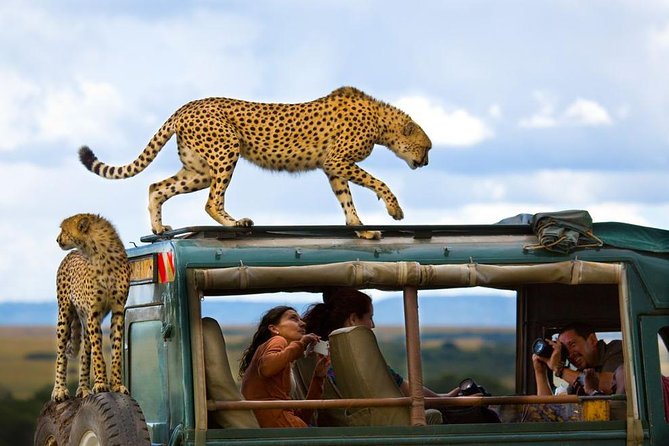East African migration safaris give you a chance to see the movement of more than 1.5 million wildebeest and tens of thousands of zebra and gazelle during the dry season on the East African savanna, known as the Great Migration.
Migration safaris

In pursuit of food and water, the herds travel almost 2,000 kilometers from the southern Serengeti plains and Ngorongoro Crater to Maasai Mara National Reserve, then return to the southern Serengeti.
Although it is known as the Great Migration, the migration of animals is not a straightforward journey from point A to point B. Migrations never are.
The Great Migration is a circular cycle of migration that wildebeest engage in each year to avoid a simple back-and-forth journey between Tanzania and Kenya.
The Masai Mara is the northern extension of the Serengeti plains and is by far the smallest of the two conservation zones.
It is situated in southern Kenya and shares its southernmost boundary with Tanzania; this is where the wildebeest herds gather from around June to November.
The Masai Mara is a well-liked location for a safari to view the Wildebeest Migration, and tourist numbers there can increase from around June to October.
Consider lodging in one of the adjacent private conservancies to the Mara if you want to avoid the tourist hordes. You will experience exclusive-use game drive regions where you may travel off-road, on night drives, and on guided bush walks in addition to still having access to the Migration hot places inside the national reserve, which are activities that are not allowed.
This often predictable pattern, nevertheless, is dynamic. The weather varies from year to year, and the consequences of climate change have made this variation even more extreme. The Serengeti’s rains are happening less frequently. Early downpours in some years and prolonged droughts in others have disturbed the herds’ natural equilibrium.
Migration safaris are one of the best experiences one may have when traveling in Africa is seeing the Great Migration on the Serengeti grasslands. Everyone should take advantage of the opportunity to stand up in their vehicle and take in the thousands of animals roaming over the breathtaking landscape. But it’s critical to be knowledgeable about the difficulties these creatures and their habitat are currently experiencing.
The Grumeti River, which crosses the Serengeti National Park horizontally, is a great place to see wildebeest drinking and crossing. There are many crocodiles in the river, and they frequently bite unwary wildebeest as they pass.
Despite the numerous predators, wildebeest must cross the river to reach the grazing pastures of the north; hence, the crossing is a required act of sacrifice and desperation.
Similar to how the Mara River flow northeast through Kenya’s Narok Country and Serengeti National Park. You may see the migratory herds at the crossings since they must cross the Mara to access the Maasai Mara National Reserve’s flora.
Seeing a lion or cheetah kill a wildebeest is also frequent in Serengeti National Park and Maasai Mara National Reserve. Migration safaris are the best when taken between the months of July and September during which time you will witness the movement of thousands of animals.
